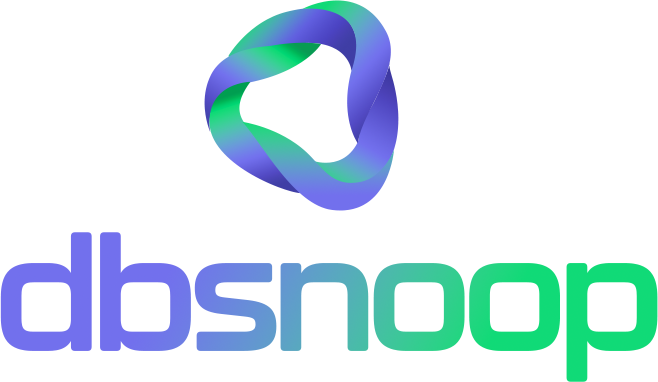

For most IT operations, the night represents a dangerous paradox. It is seen as a period of calm, the ideal window of opportunity to perform the heaviest maintenance tasks and the most intensive data processes. However, this “calm” is precisely what makes it the riskiest phase of the 24-hour cycle.
Without the team’s active surveillance, systems operate in a blind spot, where subtle failures can turn into catastrophic problems that will only be discovered the next morning, when the business impact is already severe and the root cause is buried under hours of irrelevant logs.
The problem is not the failure that brings down a server and triggers a red alert. The real enemy is the silent failure: the backup that finishes with a “success” status but is corrupted; the ETL process that inserts inconsistent data without generating an explicit error; the performance degradation that slowly accumulates and sets the stage for the “mysterious congestion” at 9 a.m.
This article details the three most common and dangerous nightly failures and explains how a change in strategy, from reactive monitoring to predictive observability, can systematically prevent them.
Failure #1: Backup Corruption and the False Sense of Security
The backup is your company’s most critical insurance policy against data disasters. A failure here is not a matter of “if,” but of “when” its consequences will be devastating. The nightly danger lies in the autonomous and unsupervised nature of these processes.
The Problem: The “Green Check” That Lies
Most backup tools are limited to reporting a binary status: success or failure. This creates a dangerous false sense of security, as it ignores a range of partial failures and integrity issues:
- Logical Inconsistency: The backup may be physically complete but logically inconsistent. For example, one part of the data might reflect the state at 2:00 a.m., while another part reflects the state at 2:15 a.m., due to locks or the way the snapshot was taken. In a transactional database, this can render the restore useless.
- Backup Window Degradation: As the data volume grows, the time required for the backup increases. Without trend monitoring, the backup window can start to extend into the beginning of business hours, competing for I/O resources with the first transactions of the day and causing widespread slowness.
- Incomplete Backups due to Transient Failures: A brief network interruption or a momentary lock on a data file can cause the backup process to “skip” a critical file but still finish with a success status.
The Hidden Cost: The Invalid Backup
The cost of a backup failure is not the downtime of the job itself. The real cost is the late realization, during a real crisis (like a ransomware attack or a hardware failure), that your most recent recovery point is from 48 hours ago, or, in the worst case, invalid. The data loss, regulatory penalties (like GDPR), and damage to reputation can be fatal for the business.
The Predictive Solution with dbsnOOp: Behavioral Database Surveillance
The Autonomous DBA from dbsnOOp treats the backup process not as a binary event, but as a behavior to be analyzed.
- Job Performance Baseline: The platform learns the “normal” for your backups. It knows the average duration, the volume of I/O generated, and the CPU resources consumed for each day of the week.
- Anomaly Detection: Surveillance focuses on deviations from this baseline. an alert is generated not because the backup failed, but because its behavior was anomalous. “This Wednesday’s backup was 30% faster than average and consumed 40% less I/O. This is a strong indicator that it may be incomplete and needs human verification.” or “The backup window is on a growth trend of 5% per week and will collide with business hours in 3 months.”
- Contention Analysis: dbsnOOp can identify if the backup job is causing contention (lock waits) on other tables or if it is being blocked by another nightly process, allowing the DBA team to optimize the scheduling and prioritization of routines.

Failure #2: Integrity Failure in ETL Processes
Extract, Transform, and Load (ETL) processes are the arteries that carry operational data to the company’s analytical brain, the Data Warehouse. A failure here doesn’t cause a “heart attack” (downtime), but a silent “stroke” that compromises business intelligence.
The Problem: Corrupted Data
ETL failures are particularly insidious because they rarely result in an obvious system error. Instead, they introduce inconsistencies that silently corrupt the data.
- Partial Data Load: An ETL script can fail halfway through due to a data type conversion error or a network timeout. If the job doesn’t have robust error handling, it might commit the partial transaction, leaving the Data Warehouse in an inconsistent state, with some data from yesterday and some from the day before.
- ETL Performance Degradation: Like backups, ETLs become slower as the source data grows. An extraction query that used to run in 30 minutes now takes 4 hours. If it doesn’t finish before the start of business hours, the first reports of the day will be generated with outdated data.
- “Garbage In, Garbage Out”: The failure can occur at the source. If the transactional database was slow or had locking issues during the extraction, the ETL may have read an inconsistent “snapshot” of the data, which is then loaded and perpetuated in the analytical environment.
The Hidden Cost: Business Decisions Based on Fiction
The cost here is the erosion of trust and making the wrong decisions. When management bases an investment strategy on a sales growth report that was inflated by a duplicate data load, the financial loss is direct. When marketing allocates a budget based on a campaign analysis that used incomplete data, the waste is inevitable. The deepest cost is the time data teams spend validating and correcting data instead of analyzing it.
The Predictive Solution with dbsnOOp: Top-Down Diagnosis
The Autonomous DBA provides the deep visibility needed to ensure the health and integrity of data pipelines.
- 360-Degree View and Top-Down Diagnosis: dbsnOOp monitors both the source (OLTP) and destination (Data Warehouse) databases. If an ETL job is slow, the platform uses its Top-Down analysis to dissect the problem. It shows whether the bottleneck is in reading from the source, processing in the ETL application, or writing to the destination.
- Large-Scale Query Analysis: ETL scripts can contain hundreds of queries. dbsnOOp identifies the exact query within the script that is causing 80% of the latency. It analyzes the execution plan and recommends optimizations, such as creating an index on the source table to speed up extraction.
- Data Volume Baseline: The platform’s AI can monitor the volume of data processed in each ETL run. A sharp deviation (“Today’s ETL processed 50% fewer rows than normal”) is a strong indicator of an extraction problem or a logical failure in the process, triggering a predictive alert.
Failure #3: Cumulative Degradation and the “Morning Congestion”
This is the most subtle and, perhaps, the most common failure. It’s not a single event, but the result of hundreds of small degradations that accumulate overnight, setting the stage for a cascading performance failure when users start connecting in the morning.
The Problem: Slow and Continuous Performance Death
During the night, several forces contribute to “tiring out” the database:
- Index Fragmentation: Archiving and bulk deletion routines can leave indexes fragmented and inefficient.
- Stale Statistics: Large data loads by ETLs can drastically change the data distribution in a table, making the statistics used by the query optimizer completely obsolete.
- Unmonitored Ad-hoc Queries: An analyst or an automated system might run a heavy analytical query overnight. The query finishes, but it leaves side effects, like polluting the buffer cache with data that is not useful for daytime operations.
None of these events trigger an alarm, but their cumulative effect is a database that starts the day “on life support.”
The Hidden Cost: Loss of Productivity and Opportunity
The cost is the loss of the first productive hours of the day. The IT team arrives and is immediately consumed by an investigation into widespread slowness. Database support is flooded with tickets. The entire company’s productivity drops. The sales team can’t generate proposals, the billing department can’t issue invoices. The energy that should be used to drive the business is spent trying to understand why the system is slow “for no apparent reason.”
The Predictive Solution with dbsnOOp: Trend Analysis and Proactive Health
Prevention here depends on the ability to connect the dots over time.
- Degradation Trend Analysis: The Autonomous DBA doesn’t just look at the now; it analyzes the history. It detects the trend that the average I/O cost of the main queries is increasing by 2% each day and projects when this degradation will cross an impact threshold.
- Overall Database Health: The platform offers a 360-Degree View that goes beyond individual queries. It monitors the health of indexes, the accuracy of statistics, and the efficiency of the buffer cache. It can proactively alert: “The statistics for the ‘Orders’ table are 40% stale after yesterday’s ETL, which poses a high risk to the performance of transactional queries.”
- Historical Root Cause Diagnosis: When the morning slowness occurs, dbsnOOp allows you to “go back in time.” Your team can instantly see which processes and queries were running overnight and correlate the nightly activity with the daytime degradation, eliminating the guesswork.
The night doesn’t have to be a blind spot. With the right strategy and tools, it can become the period when your system not only operates but is also autonomously optimized and strengthened, ensuring that every day starts with maximum performance and reliability.
Want to solve this challenge intelligently? Schedule a meeting with our specialist or watch a live demo!
Schedule a demo here.
Learn more about dbsnOOp!
Learn about database monitoring with advanced tools here.
Visit our YouTube channel to learn about the platform and watch tutorials.

Recommended Reading
- Database Automation: How to Unlock Growth and Innovation in Your Company: The main article details the nightly failures that undermine productivity. This post focuses on the strategic solution: automation. It explains how automating surveillance and diagnosis with an intelligent platform is the key to preventing these failures and freeing the IT team from the reactive cycle.
- Text-to-SQL in Practice: How dbsnOOp Democratizes the Operation of Complex Databases: Many nightly failures are caused by poorly formulated ad-hoc queries. This article explores how Text-to-SQL technology can mitigate this risk, offering a safer and more controlled way for users to access data, preventing a single bad query from compromising the database’s health overnight.
- How dbsnOOp Frees Your Team for What Really Matters: Let the AI Work: The human cost of investigating nightly failures is immense. This post summarizes the ultimate value of predictive observability: by letting dbsnOOp’s AI handle 24/7 surveillance and diagnosis, your team is freed from the morning forensic work to focus on innovation and resilience architecture projects.

